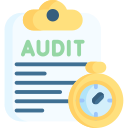
Technology Audits for Operational Risk Assessment
Today’s chosen theme: Technology Audits for Operational Risk Assessment. Step into a practical, human-centered guide to uncovering gaps, building resilience, and turning audit insights into operational strength. Subscribe for future playbooks, checklists, and real stories from the field.
Why Technology Audits Matter for Operational Risk
A single misconfigured access rule can cascade into downtime, missed orders, and reputational harm. Technology audits surface these weaknesses early, so teams act before incidents multiply. Share your biggest hidden-cost surprise with us.
Why Technology Audits Matter for Operational Risk
During a routine audit, a retired admin account still held privileged access. We remediated in hours, not months, and avoided a serious escalation path. What audit discovery reshaped your playbook?



Risk-based scope that actually fits your operations
Start with business-critical services and known incident patterns. Prioritize controls where failure hurts customers, uptime, or data integrity most. Tell us which services top your risk list this quarter and why.

Stakeholders, owners, and escalation paths
Map system owners, process leads, and third-party contacts before testing begins. Clear owners speed evidence collection and remediation. Who signs off matters. Invite your operational owners to subscribe for upcoming stakeholder templates.

Cadence, timelines, and dependencies
Short, iterative audits beat annual marathons. Set two-week evidence windows, weekly check-ins, and dependency flags for teams sharing systems. What cadence keeps momentum without burning out your engineers?
Control Frameworks that Strengthen Resilience
Translate abstract controls into concrete runbooks: backup verification, privileged access reviews, and change approvals tied to deployment pipelines. Which framework mapping helped you close real operational risk fastest?


Evidence, Testing, and the Right Tooling
Screenshots fade; export logs, configuration hashes, and system-generated reports with timestamps and owners. Tie each artifact to a control and risk. What evidence format streamlined your last audit review?
Evidence, Testing, and the Right Tooling
Use configuration scanning, CI checks, and drift detection to validate controls continuously. Automation reduces manual effort and catches regressions early. Subscribe for our upcoming automation checklist tailored to audit teams.

Connect each finding to a business outcome: revenue at risk, customer trust, regulatory exposure. Stories motivate action. What framing finally got leadership to fund your most critical remediation?
Reporting That Drives Action
Rank by risk, effort, and dependency complexity. Timebox fixes into sprints with clear acceptance criteria. Comment with your favorite prioritization method that balances urgency with engineering reality.
Reporting That Drives Action
Your First 90 Days of Technology Audits for Operational Risk

Weeks 1–3: discovery and readiness baseline
Inventory critical services, map dependencies, and review incident history. Identify quick wins and obvious gaps. Share your discovery checklist with peers in the comments to help others get started.

Weeks 4–8: control backlog and pilot audit
Build a prioritized backlog, run one pilot audit, and validate evidence flows. Measure cycle time and friction points. Subscribe to receive our pilot audit retrospective guide next week.

Weeks 9–12: scale, automate, and communicate
Automate repeatable checks, publish a clear reporting cadence, and embed remediation in sprint planning. Tell us which automation step freed the most time for deeper risk analysis.
